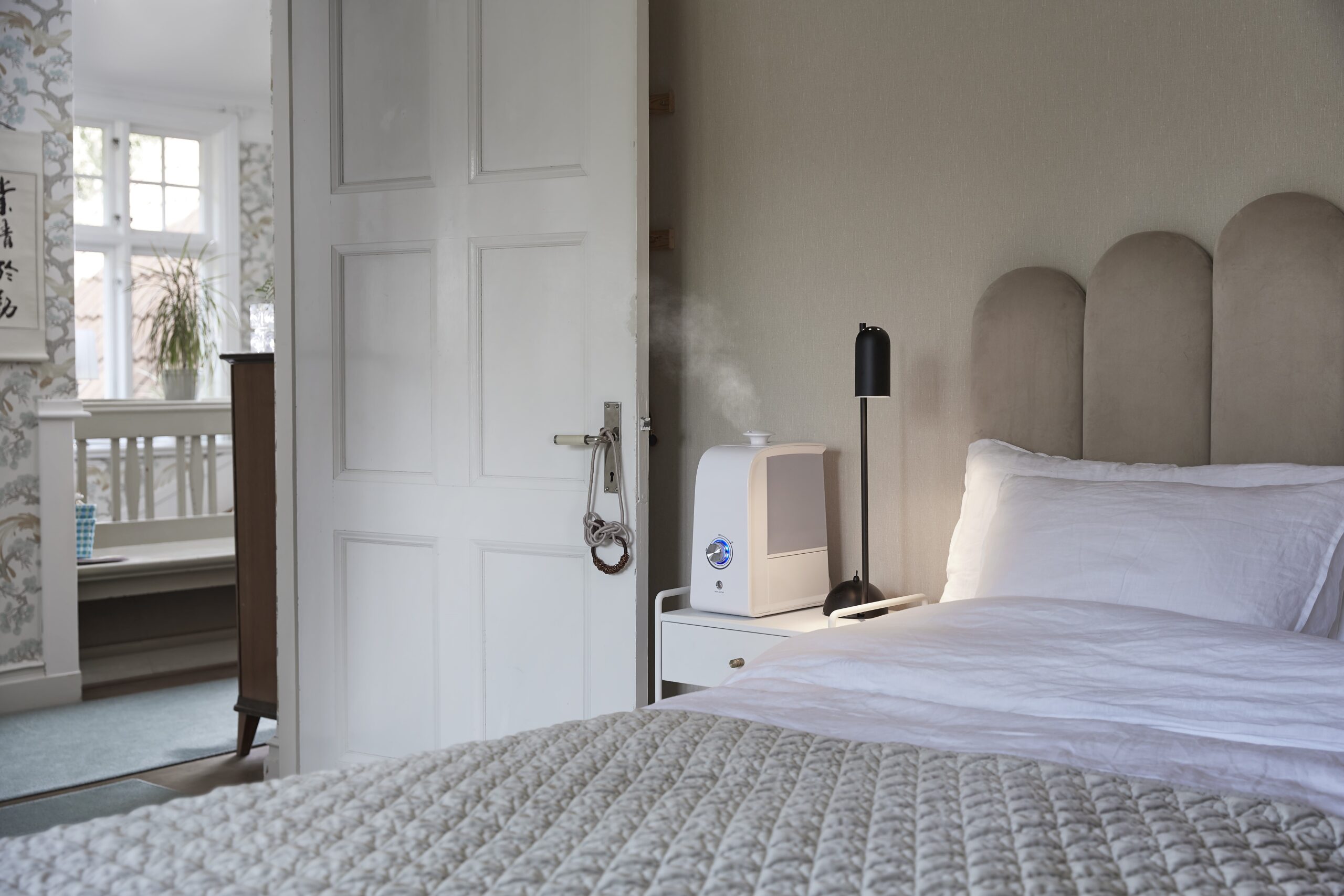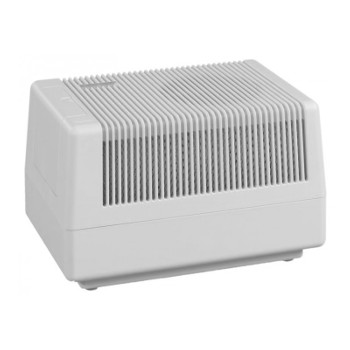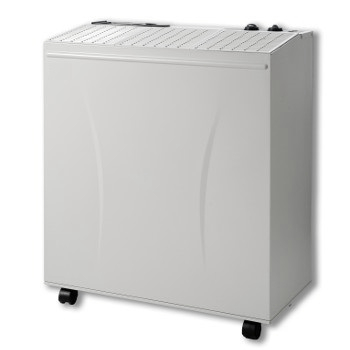Humidity in your organisation is our concern
solutions for all humidity problems
Quick to: advice and product
Buying a humidifier – which is the best one for you?
Buying a humidifier will improve your living environment. Humidity directly affects the air quality in your home and workplace. And your health depends heavily on air quality, we know. If you suffer from dry skin, respiratory irritation or sleep problems, buying a humidifier is a powerful improvement to solve these problems. In addition, good humidity is very important for preserving valuables. Such as works of art, antique books and furniture, as well as wooden floors. Is buying a humidifier useful? Yes, a humidifier makes sense. And we’ll tell you all about it. Also, which humidifier do you need?
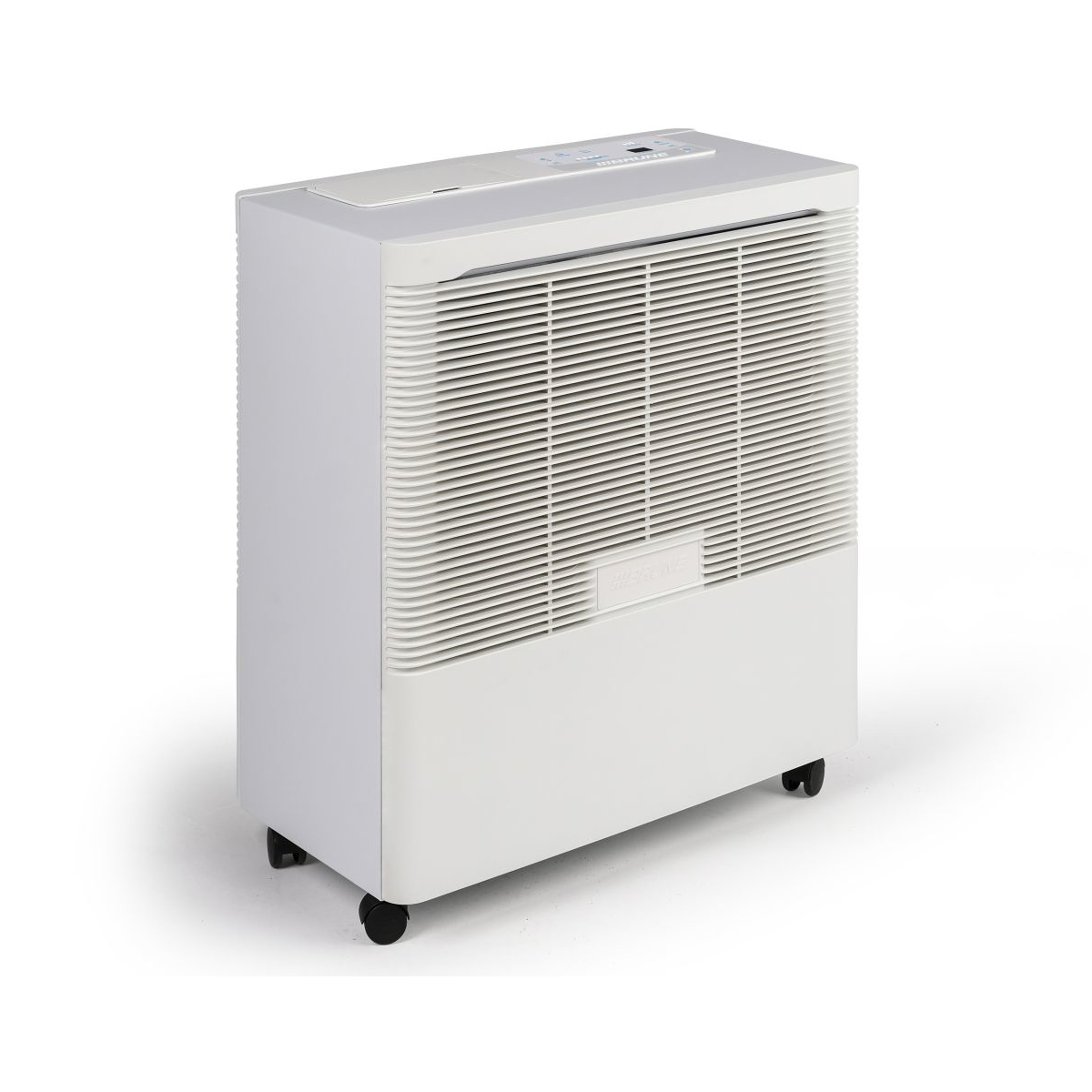
What to look for when buying a humidifier?
-
A humidifier for the baby’s room
-
A humidifier for the living room
-
Humidifiers for special care objects
-
Humidifiers for professional use
What are the 4 most used humidifiers?
| Place: | Necessary features: | |
| 1. Baby room | * Silent humidifier | |
| * With nightmode | ||
| 2. Living room | * Big capacity | |
| * Silent humidifier | ||
| 3. Special | * Accurate settings possible | |
| Care objects | * Large reservoir | |
| 4. Professional | * Big capacity | |
| Use | * Automatic water supply | |
Read more:
What is a humidifier?
A humidifier is a small device that introduces moisture into the environment. This device is usually small and has a water reservoir that evaporates through various systems.
Humidifiers are needed to create a suitable atmosphere. Experts recommend keeping the relative humidity between 40% and 60%, as below 40% both health and valuables suffer serious consequences.
In other words, if there is a very dry climate at home, they manage to balance the atmosphere and (thanks to humidity) maintain a pleasant space. Moreover, air quality deteriorates in winter due to the constant use of heating.
Humidifiers make the environment pleasant and reduce the risk of microorganisms spreading in the air. This prevents respiratory infections in both babies and adults. It also prevents throat and nose irritations. Even colds are more bearable with humidifiers because the quality of the air is better.
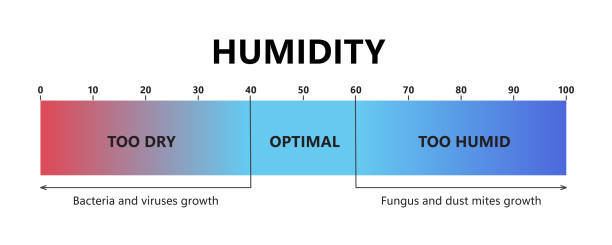
Types of humidifiers and recommended use
There are different types of humidifiers available, each with their own operation and benefits. Here are some common types of humidifiers, including their recommended use:
1. Ultrasonic Humidifiers:
- Working principle: Ultrasonic humidifiers use ultrasonic vibrations to atomise water into tiny particles, which are then released into the air.
- Recommended use: Suitable for bedrooms and living spaces because of their quiet operation. They are energy-efficient and alleviate dry air problems such as dry skin and respiratory problems.
2. Cold-water Humidifiers:
- Working principle: Cold-water humidifiers use a fan to blow air through a wet medium, such as a sponge or evaporation pads, to add water to the air without heating it.
- Recommended use: Effective for increasing humidity in larger rooms, such as living rooms. They are energy-efficient and require regular maintenance, such as changing the medium and cleaning.
3. Steam humidifiers:
- Working principle: Steam humidifiers heat water to create steam, which is then released into the air.
- Recommended use: Ideal for quickly increasing humidity in emergencies. Often used in medical situations. Note: Steam humidifiers pose a fire hazard and require careful maintenance.
4. Adiabatic Humidifiers:
- Working principle: Adiabatic humidifiers increase humidity by passing air along a wet medium, with the water evaporating naturally.
- Recommended use: Suitable for maintaining humidity in larger spaces such as offices and warehouses. They are energy-efficient but their effectiveness can vary depending on the ambient temperature.
When choosing the right type of humidifier, it is important to consider factors such as room size, noise level, energy efficiency and maintenance needs. Always read the manufacturer’s instructions for specific usage and maintenance recommendations.
Buying a humidifier for the baby’s room, what do you look out for?
A humidifier is a valuable tool for creating a healthy environment in the baby’s room. Here are some considerations and tips for using a humidifier in the baby’s room:
1. Why a humidifier for the baby’s room?
- Babies have sensitive skin and airways. Optimal humidity in their room prevents dehydration, dry skin, irritated eyes and respiratory problems in babies.
2. Type of humidifier:
- Choose a humidifier with a suitable size and noise production for the baby’s room. Ultrasonic humidifiers are often a good choice because of their quiet operation.
3. Maintenance:
- Keep the humidifier clean and change filters regularly to prevent the growth of mould and bacteria. Cleaning is especially important in a baby’s room.
4. Security:
- Place the humidifier at least 2 metres away from the cradle and out of the baby’s reach to prevent the child from knocking over or pulling on the humidifier. Make sure no water leaks onto the floor or electrical cords.
5. Humidity level:
- Use a hygrometer to measure the humidity in the baby’s room. The ideal humidity level is usually between 40% and 60%. Set the humidifier to maintain this level.
6. Water quality:
- Preferably use distilled water to reduce mineral deposits and contaminants in the humidifier.
7. Use only in dry conditions:
- It is advisable to use a humidifier only when the humidity is too low. Excessive humidity also causes problems.
8. Check for excessive humidity:
- Too much moisture in the air can promote mould growth. If you notice condensation on windows or walls, lower the humidifier setting.
A humidifier creates a healthy environment in the baby’s room, but it is important to handle the device carefully and keep a close eye on humidity levels. Always refer to the manufacturer’s instructions for specific guidelines on how to use and maintain the humidifier.
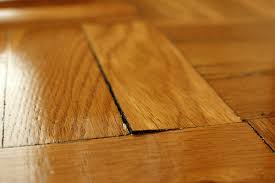
What to look out for when buying a humidifier for the living room?
A humidifier is a valuable addition to the living room as it improves the overall living environment. Here are some considerations and tips for using a humidifier in the living room:
1. Health:
- A humidifier humidifies the air in the living room, creating a healthier environment. This reduces problems such as dry skin, irritated eyes, sore throats and breathing problems.
2. Type of humidifier:
- Choose a humidifier with a suitable size and noise production for the baby’s room. Ultrasonic humidifiers are often a good choice because of their quiet operation.
3. Placing:
- Place the humidifier on a flat, stable surface and make sure it is away from electronics or other sensitive devices. Avoid placement on wooden surfaces where water causes damage.
4. Humidity level:
- Use a hygrometer to measure the humidity in the living room. The ideal humidity is usually between 40% and 60%. Set the humidifier to maintain this level.
5. Maintenance:
- Keep the humidifier clean and follow the manufacturer’s instructions for regular maintenance, such as changing filters and cleaning the unit.
A humidifier in the living room improves the overall quality of life, especially in dry climates or during the winter months when heating reduces humidity. Be sure to follow the manufacturer’s instructions and monitor humidity levels to maintain a comfortable and healthy living environment.
Humidifiers for special care objects
Humidifiers are very important for specific care objects such as pianos, works of art and wooden floors. Here are some guidelines for using humidifiers to protect these items:
- Piano:
- Consistent humidity is crucial for the health of a piano. Too many fluctuations in humidity lead to problems such as detuning, cracks in the wood and corrosion of metal parts.
- Place a humidifier near the piano to keep the humidity at a stable level, preferably between 40% and 45%. Use a digital hygrometer to measure the humidity and adjust the humidifier’s settings if necessary.
- Artworks:
- Paintings and works of art are affected by fluctuations in humidity, leading to warping, cracking or discolouration.
- Place a humidifier in the room where the artworks are located to keep the humidity at a stable level, preferably between 40% and 55%.
- Wooden floors:
- Wood floors expand and contract in response to changes in humidity, leading to cracks, warping and other damage.
- Use a humidifier in the room to keep the humidity at a constant level, preferably between 40% and 60%. This will help prevent damage to the wooden floor.
When using humidifiers for specific care objects, it is important to:
- Regularly measure the humidity using a hygrometer and adjust the humidifier’s settings to maintain the desired humidity.
- Ensure the quality of the water used in the humidifier to reduce mineral deposits and contaminants.
- Maintain and clean the humidifier regularly to prevent the growth of mould and bacteria.
- Place the humidifier carefully to avoid damage due to water leakage.
Proper use of humidifiers helps protect valuables and extends their lifespan.
Buy humidifier for professional use
Humidifiers for professional use, such as in museums, instrument shops, hospitals and bookstores, play a vital role in preserving valuable items and creating a comfortable and healthy environment. Here are some considerations and tips for using humidifiers in such professional environments:
1. Museums:
- Museums often house precious artworks and historical objects sensitive to humidity fluctuations. Constant humidity is crucial for the preservation of these items.
- Place industrial humidifiers in various museum rooms to keep humidity at the desired level. This level can vary depending on the artefacts, but a range of 40% to 55% is often recommended.
2. Instrument shops:
- Musical instruments, especially wooden instruments, are sensitive to changes in humidity. To maintain their performance and durability, it is important to regulate humidity.
- Use humidifiers specifically designed for instrument shops and keep the humidity between 40% and 50%.
3. Hospitals:
- In hospitals, air quality is very important for both patients and medical equipment. Controlling humidity is important to maintain a comfortable and safe environment.
- Place humidifiers in operating rooms, laboratories and other critical areas where strict humidity control is required. The recommended humidity varies depending on the application, but 40% to 60% is often appropriate.
4. Bookstores:
- Books are sensitive to both too much and too little moisture. Constant humidity preserves books and prevents them from warping or being damaged.
- Place humidifiers in bookstores to maintain humidity at around 40% to 50%.
Advantages of a humidifier
Using a humidifier offers several benefits for both the health and comfort of people and the protection of their property. Here are some of the main benefits of humidifiers:
1. Improved air quality:
- Humidifiers provide optimum humidity, improving air quality. This leads to a reduction in allergies, coughing, sore throats and congestion.
2. More comfortable breathing:
- Appropriate humidity makes it easier to breathe, especially in dry climates or during winter months. This provides relief for people with respiratory problems such as asthma.
3. Relief from skin problems:
- Dry air leads to skin conditions such as dry skin, itching and flaking. A humidifier will keep your skin hydrated.
4. Protection of wooden furniture and floors:
- Humidifiers prevent wooden objects, such as furniture and floors, from shrinking, cracking or warping due to fluctuations in humidity.
5. Conservation of musical instruments:
- Wooden musical instruments are sensitive to changes in humidity. A humidifier maintains proper humidity levels to improve instrument performance and longevity.
6. Protection of art and antiques:
- Works of art, antiques and museum pieces get damaged by fluctuations in humidity. Humidifiers provide the right environmental conditions to preserve these objects.
7. Better sleep quality:
- A humidifier in the bedroom prevents snoring and a dry throat, leading to a better sleep.
8. Energy savings:
- Humid air feels warmer than dry air, so less heating is needed. As a result, humidifiers save energy in winter.
9. Possible reduction in transmission of respiratory infections:
- Research has shown that optimal humidity reduces the spread of airborne viruses, which in turn reduces the transmission of respiratory infections.
Using a humidifier depends on individual needs and circumstances, but it offers significant health, comfort and property protection benefits. Maintaining proper humidity levels and regularly servicing the humidifier is important to maximise these benefits.

Risks and tips for prevention by using a humidifier
A humidifier improves air quality and comfort, but there are some risks, mainly related to the growth of bacteria, such as legionella, in the humidifier’s water tank. Legionella is a bacterium that can cause Legionnaires’ disease, a serious respiratory infection. Here are some tips to minimise these risks.
Risks:
-
- Legionella contamination: If the water in the humidifier is not changed regularly and the unit is not cleaned properly, it leads to the growth of legionella bacteria. When the humidifier spreads these bacteria, they start breathing in, causing respiratory infections.
- Fungal and bacterial growth: Besides legionella, humidifiers also cause mould and bacteria growth, leading to air quality problems and allergic reactions.
Tips for prevention:
- Regular maintenance: One of the most important steps is regular maintenance of the humidifier. Follow the manufacturer’s instructions for cleaning and maintenance. This usually includes emptying, rinsing and cleaning the water tank and other parts on a weekly basis.
- Use distilled water: Consider using distilled water instead of tap water. Distilled water contains fewer minerals and contaminants, reducing the growth of bacteria and mould.
- Change filters: Antibacterial filters prevent the growth of bacteria in the water and mould, and protect the humidifier from limescale. Regular replacement is essential to prevent health problems and extend the life of the device.
- Make sure it is dry: Allow the humidifier to dry completely after use before storing it. This helps prevent mould and bacterial growth.
- Use air cleaners: Consider using air cleaners with antibacterial filters or UV lamps to purify the air and reduce bacterial growth.
- Control humidity: Make sure the humidity in the room is not too high. Excessive humidity also promotes the growth of bacteria and fungi.
- Inspect and clean the device’s water tanks: If you use multiple humidifiers, make sure each humidifier is thoroughly inspected and cleaned to prevent the spread of legionella.
Regular cleaning and maintenance of your humidifier is crucial to minimise health risks. By taking these precautions, you will enjoy the benefits of a humidifier without the potential risks of legionella contamination.

